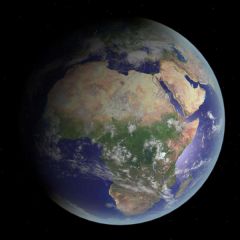Earth
Jump to navigation
Jump to search
Earth is the third planet from the Sun and is the only body known to have life. It is one of the four 'rocky' planets, the others are Mercury, Venus, and Mars. The Moon is the only natural satellite orbiting the earth.
Natural satellites
See also
- Addons for Earth
- Earth at Wikipedia
External links
Earth at Wikipedia
| edit The Solar System | |
|---|---|
| Central star |
Sun (Sol) |
| Planets |
Mercury - Venus - Earth - Mars - Jupiter - Saturn - Uranus - Neptune |
| Natural satellites |
Moon - Phobos - Deimos - Io - Europa - Ganymede - Titan - more... |
| Add-ons |
Planets - Dwarf Planets - Small objects - Natural satellites - Alternative star systems |
 | This article, about a planet, is a stub. You can help Orbiterwiki by expanding it.
|
